
10 Oct, 2016
Letter from South Africa: The prison where white supremacists jailed Nelson Mandela for 18 years
Robben Island, South Africa — No visit to South Africa is complete without a tour of Robben Island, described by the UNESCO World Heritage documentation as a symbol of “the triumph of the human spirit, of freedom, and of democracy over oppression.” This is where anti-apartheid leader and first President of a democratic South Africa, Nelson Mandela, was incarcerated for 18 long years along with hundreds of “political prisoners” for standing up to the white supremacist apartheid regime.
To walk through the same prison corridors as those valiant people who sacrificed so many years of their life for the cause of global freedom and democracy was indeed a surreal experience. As the world again drifts towards demagoguery, sectarianism, discrimination and oppression — all excesses of fascist supremacy — a visit to Robben Island is like a spiritual journey, energising, inspiring and motivating for all those who are battling the odds.
Located just 6.9 km off Cape Town, the historic island museum is accessible by ferry and under the administrative supervision of the SA Department of Arts and Culture. As words will never adequately express the full impact of the visit, my photographs below will speak for themselves.
Visit the website http://www.robben-island.org.za/ for more comprehensive details on Robben Island, including history, virtual tours, prisoner stories, news, transport and booking arrangements. UNESCO’s website on Robben island is here: http://whc.unesco.org/en/list/916. This is the wikipedia site: https://en.wikipedia.org/wiki/Robben_Island.
 The powerful message that greets visitors upon entry at the ferry terminal for the commute to Robben Island. Please click on the picture to enlarge and read the quote by Ahmed Kathrada, one of Nelson Mandela’s closest allies and confidantes in the anti-apartheid movement. |
 The entrance to the ferry. |
 Visitors queue up past a range of display panels narrating the brutal history of the white supremacist apartheid regime. |
 Pls click on the photographs to enlarge and read the text explaining the historic imagery. |
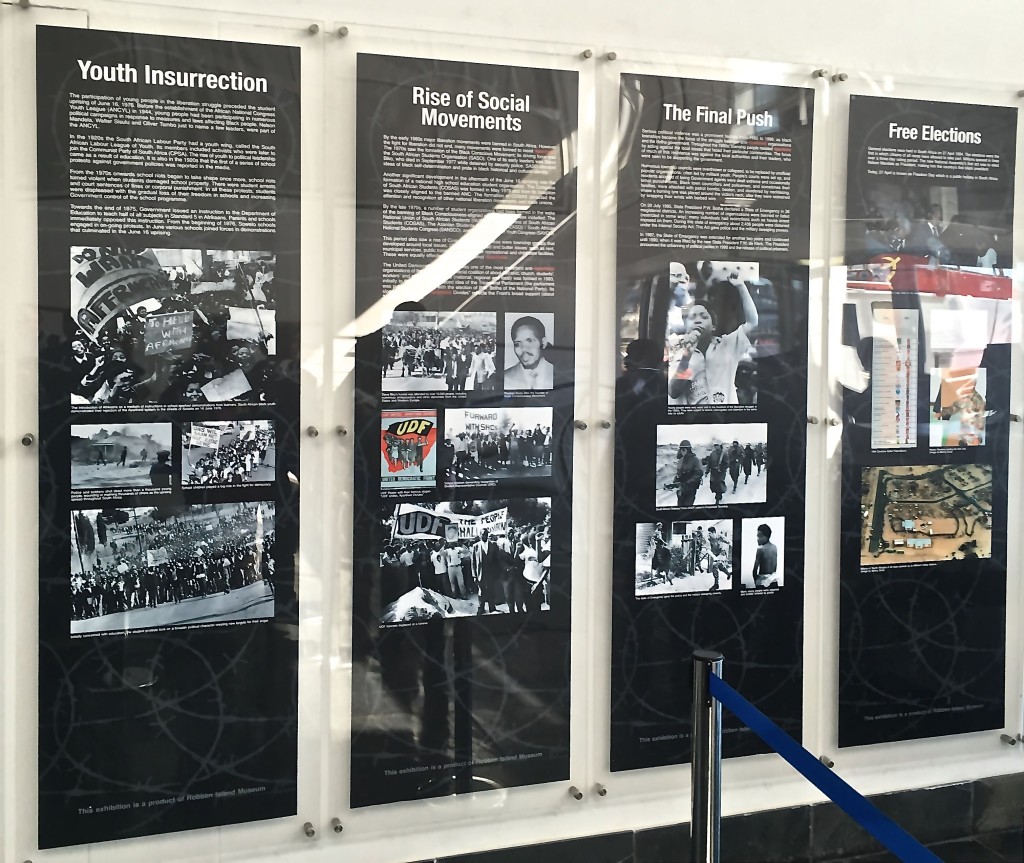 Pls click on the photographs to enlarge and read the text explaining the historic imagery. |
 Pls click on the photographs to enlarge and read the text explaining the historic imagery. |
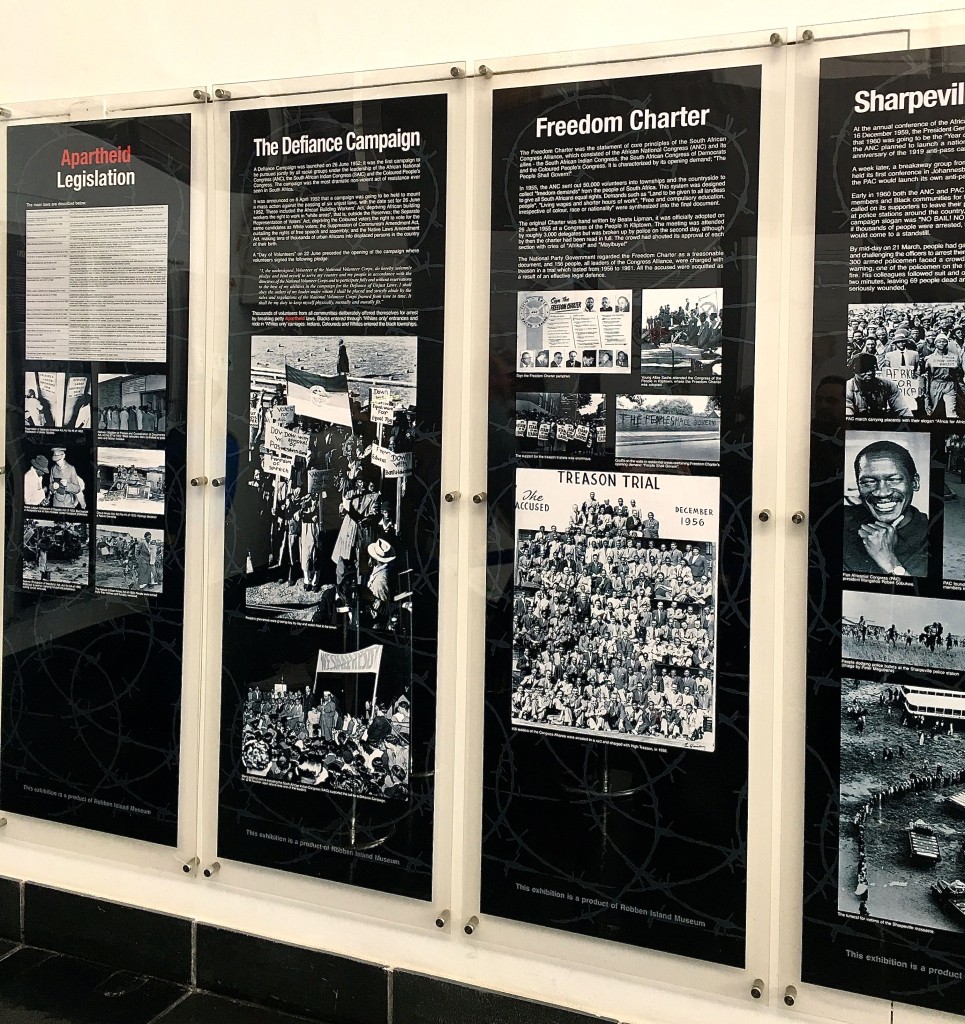 |
 Pls click on the photographs to enlarge and read the text explaining the historic imagery. |
 Pls click on the photographs to enlarge and read the text explaining the historic imagery. |
 The declaration that greets visitors as the ferry docks at the wharf. |
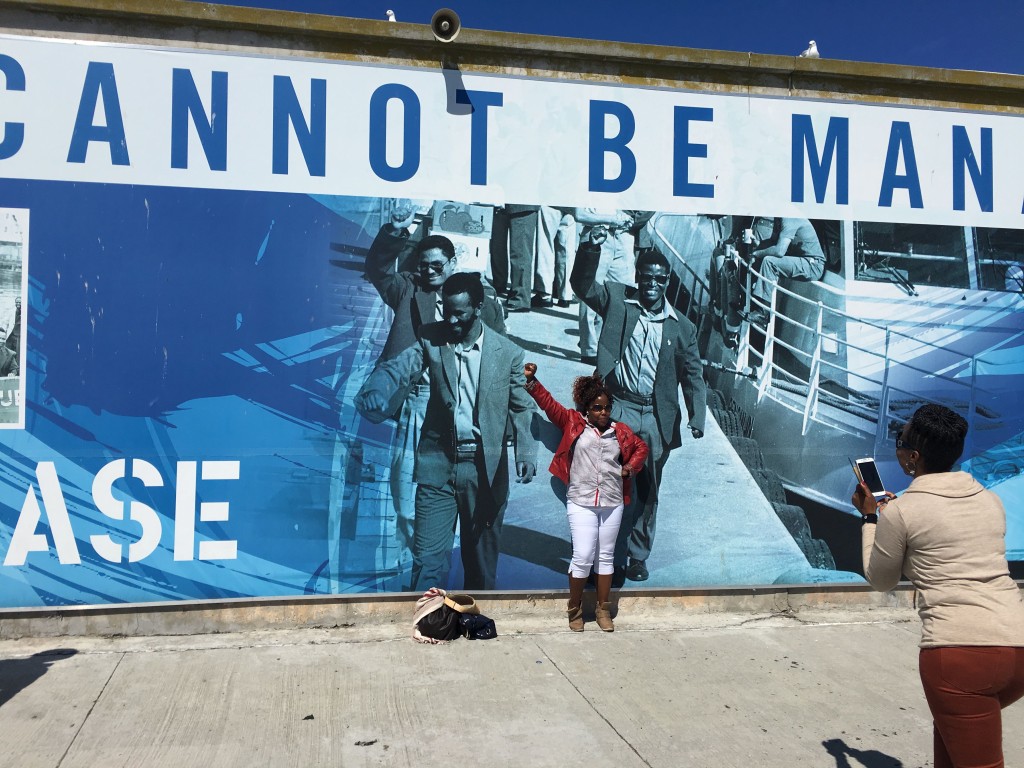 Visitors share the solidarity to keep the spirit alive. |
 This display shows Mandela delivering a speech against the backdrop of his own image and other co-prisoners. |
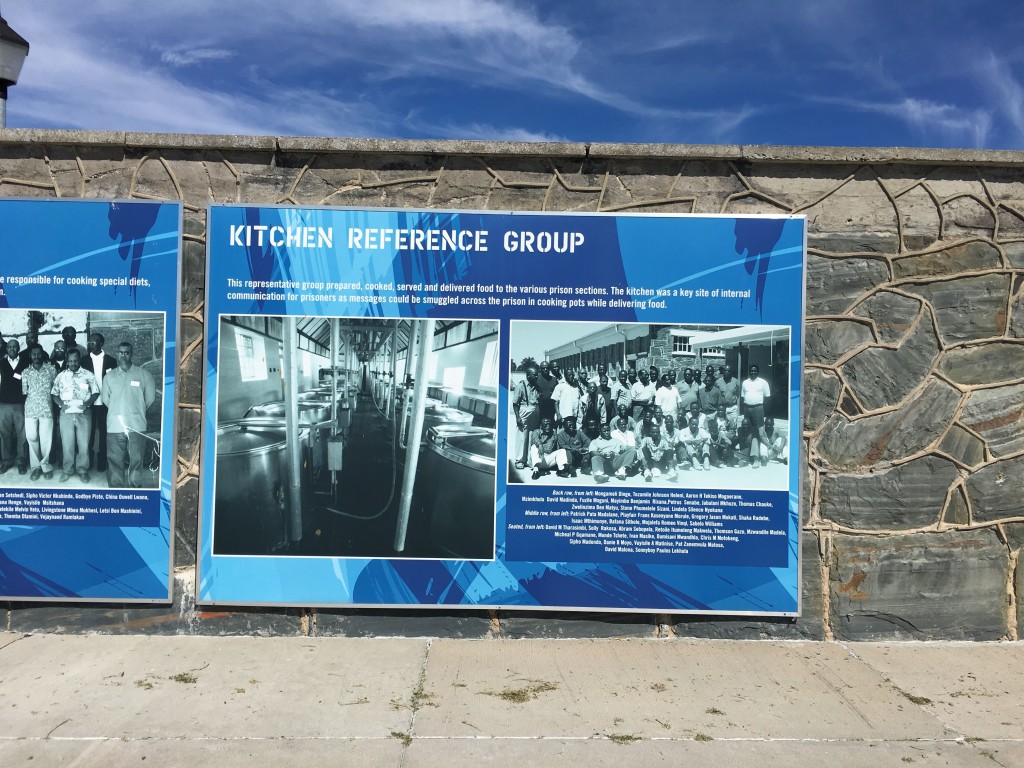 Other panels on the walls of the wharf provide further insights into the prison’s brutal history. |
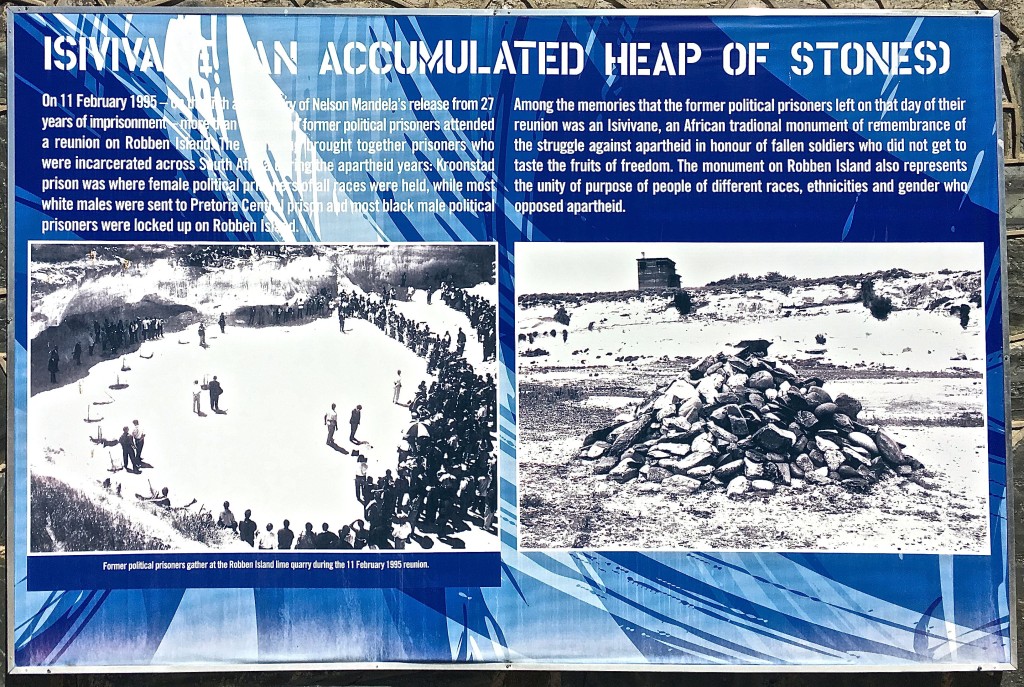 Other panels on the walls of the wharf provide further insights into the prison’s brutal history. As it says: “The monument on Robben Island also represents the unity of purpose of people of different races, ethnicities and gender who opposed apartheid.” |
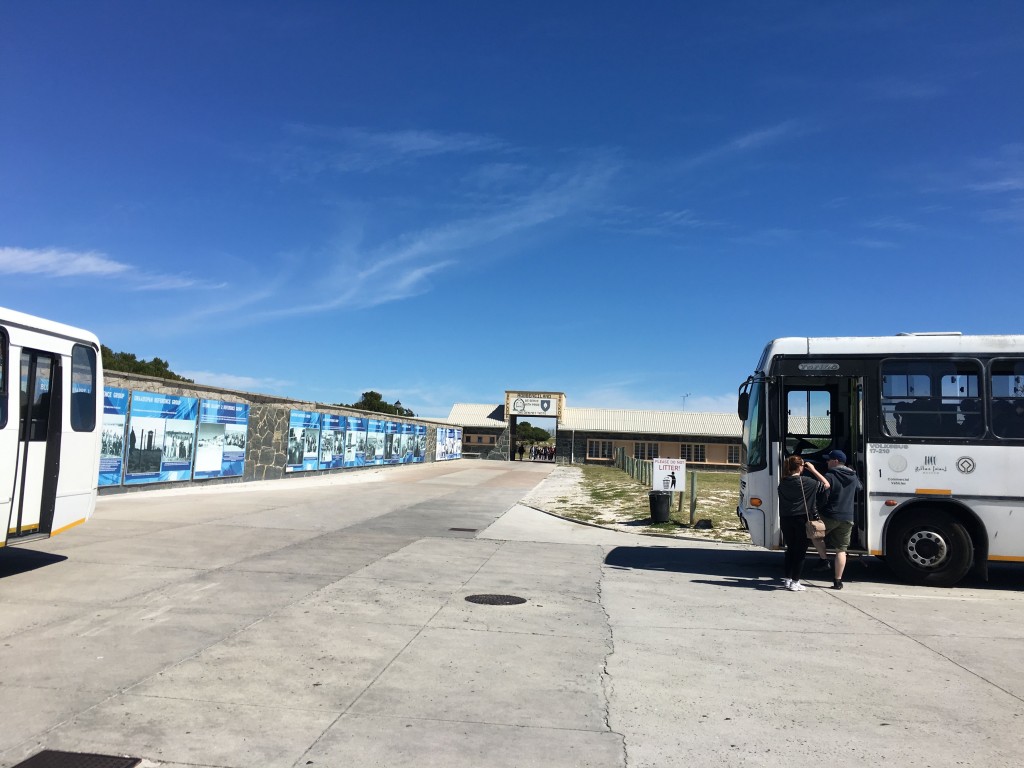 After leaving the ferry, visitors tour the prison grounds first by coach. |
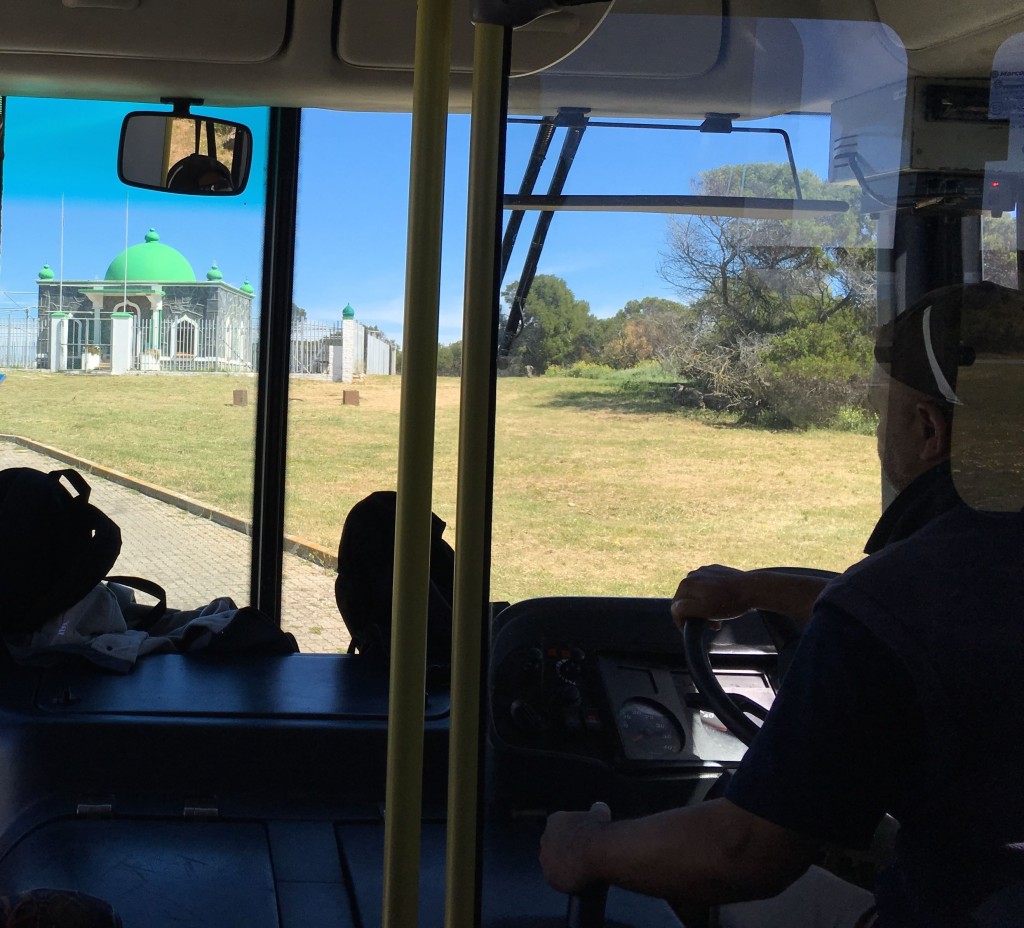 The Hadjie Kramat, a Muslim shrine near the prison signifies the relationship between Islam and the Island. |
 Our guide that day was Thabo Seithathi, 27, who said he was very proud to be providing visitors with insights into the historic legacy of Robben Island. |
 On a clear day, visitors can see the mainland in the distance. Gives some idea of how far offshore the island was located. |
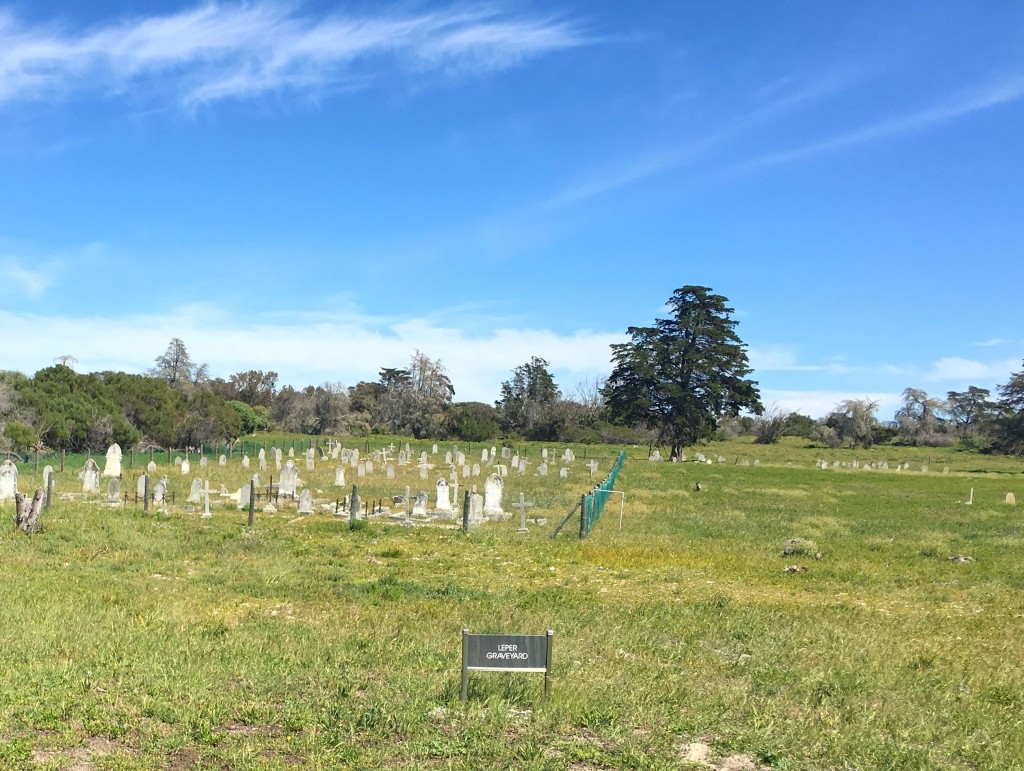 Many prisoners never saw freedom again. This is where they were buried. |
 The solitary confinement yard of the Maximum Security Prison. |
 The soccer field where the prisoners were allowed to play, only once a week. |
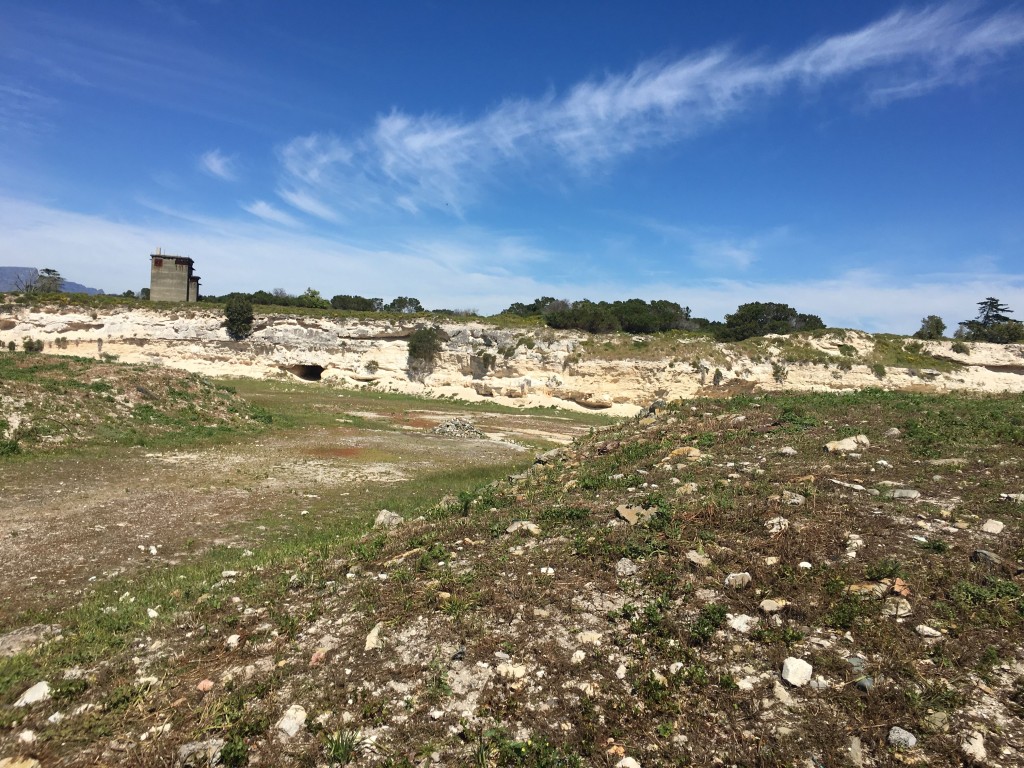 The quarry where the prisoners spent all day. |
 Visitors entering the jailhouse. |
 Ex-prisoners now guide the visitors around, providing first-hand narration of the harrowing conditions they experienced. |
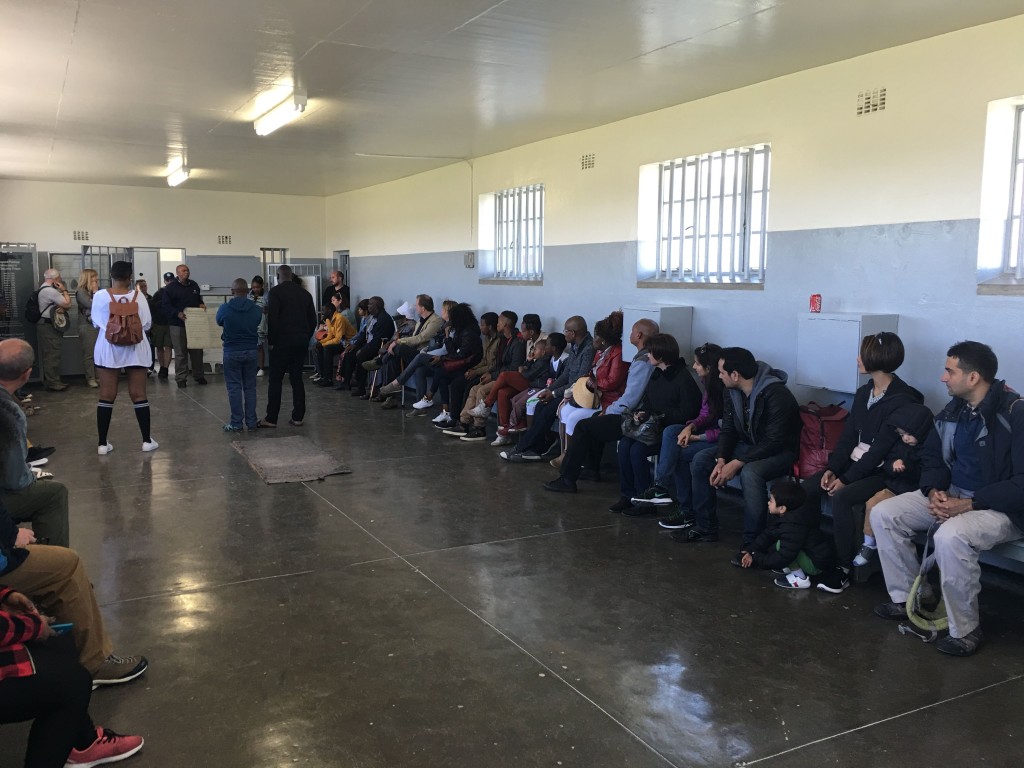 Visitors listen in rapt attention to the ex-prisoner’s narration. |
 Bunk beds in one of the prison blocks. |
 The mat on which the prisoners slept. |
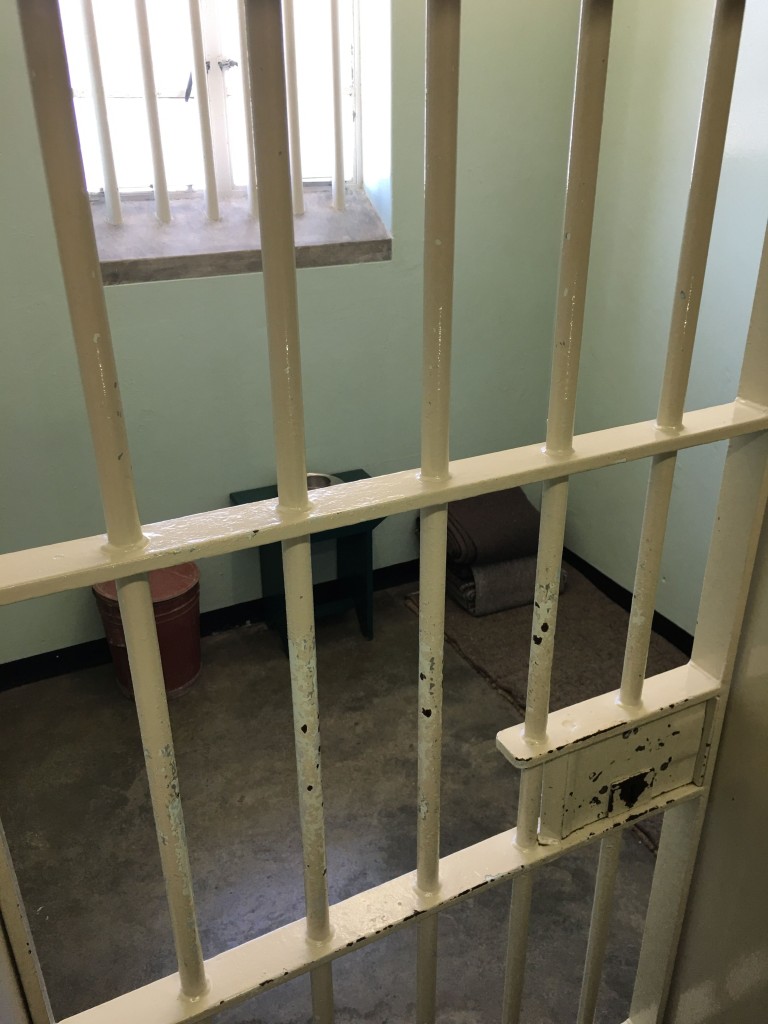 The claustrophobic 2.4 x 2.1 metre cell where Nelson Mandela spent 17 years of his life. |
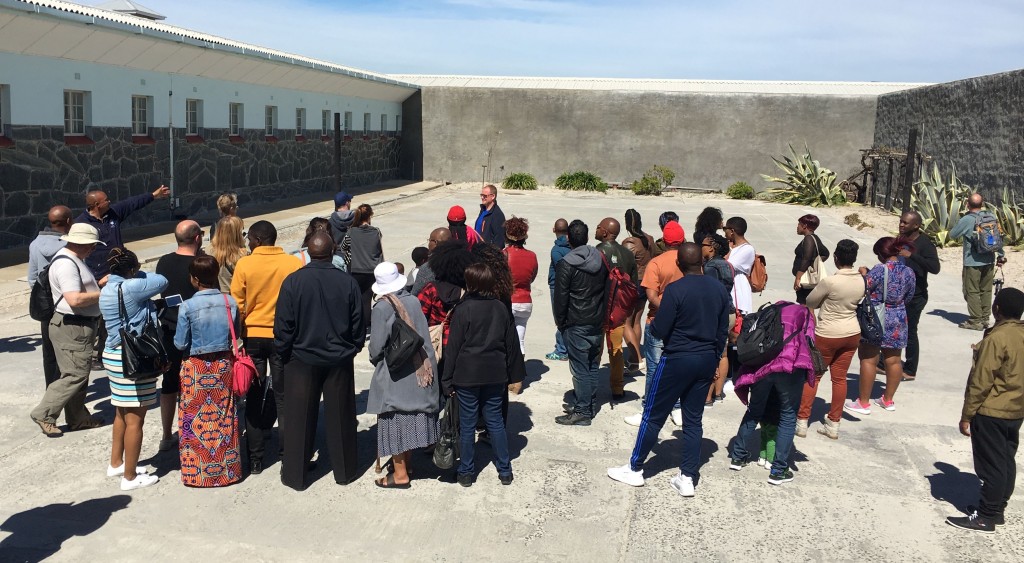 In the prison yard. |
 Ex-prisoners reunited for a photograph in August 2001. |
 The photograph taken on the day the prisoners were freed. |
 Robben Island prison today….. |
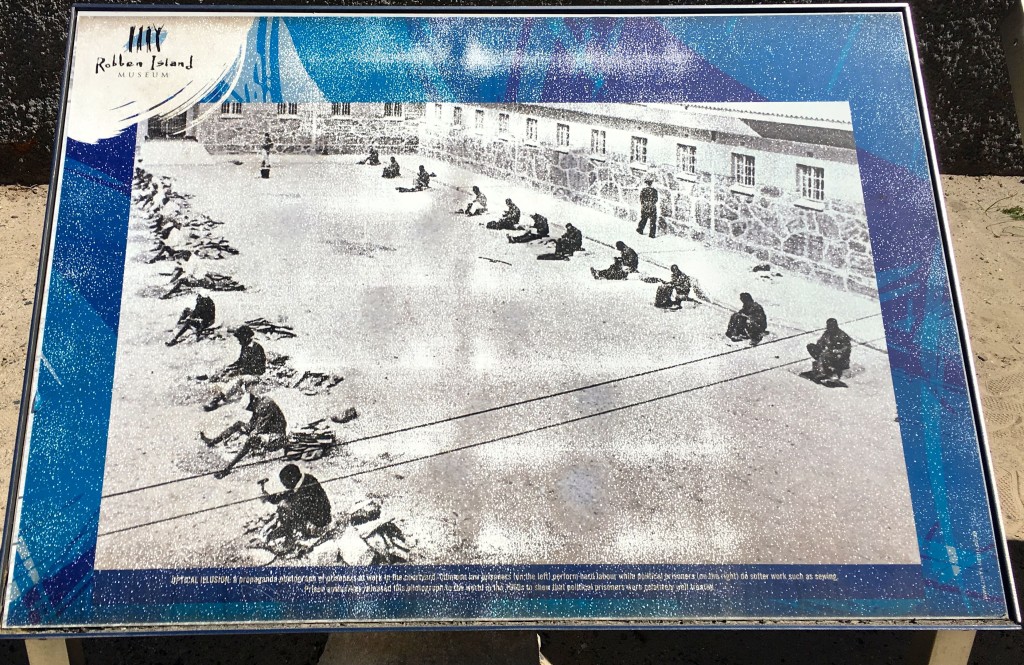 …….and what it was like then. |
 One of the prisoners, Billy Nair, clearly identified as a Hindu, sentenced to 20 years for “sabotage.” |
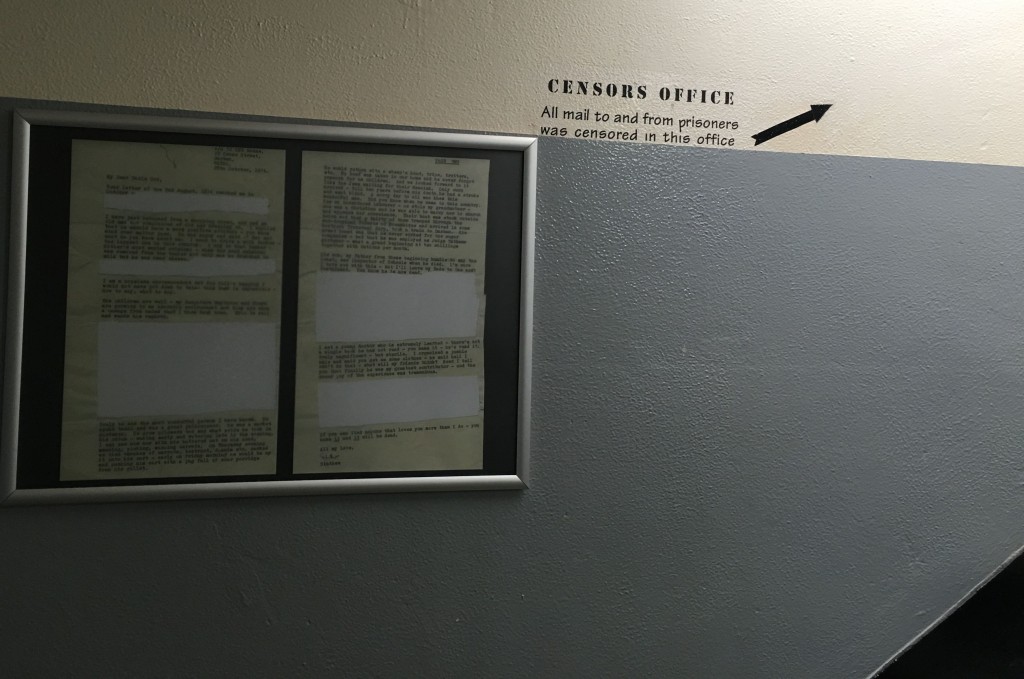 All mail was read and censored. |
 Many prisoners never saw their families again. |
 A rare photograph of Mandela in the prison is now one of the display panels. |
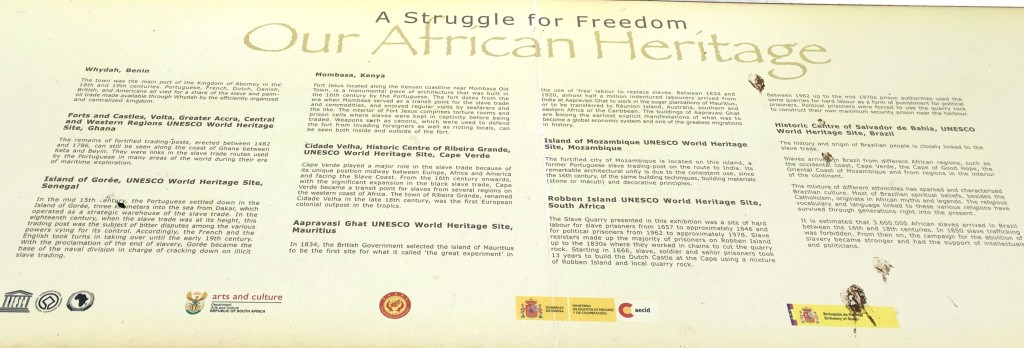 The inscription celebrating the Prison’s listing as a UNESCO World Heritage Site and a Struggle for Freedom. |



Liked this article? Share it!